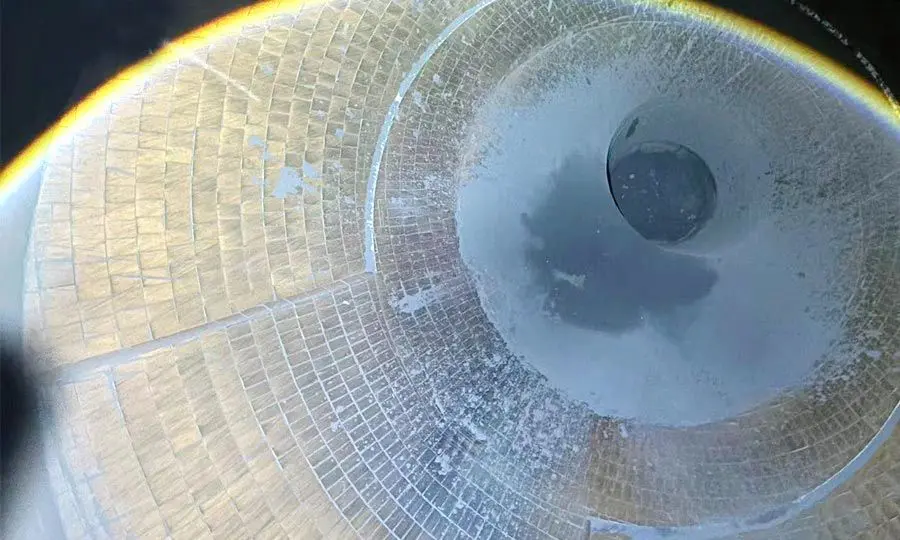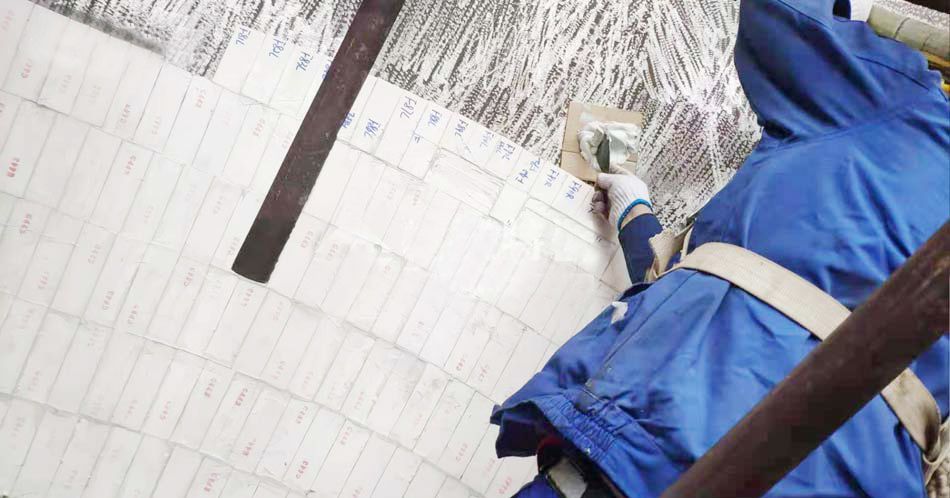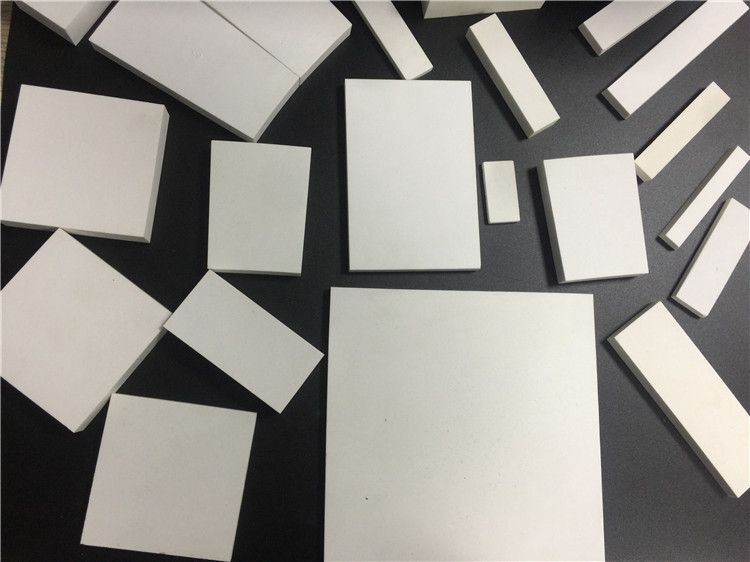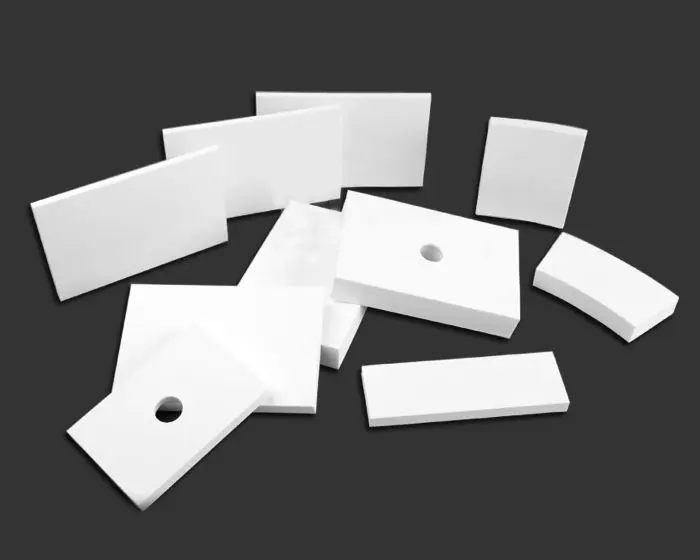
The steel production industry is a cornerstone of modern infrastructure, with blast furnaces being the heart of the process. However, these complex and massive structures face numerous challenges, particularly in the areas of wear and tear. In the blast furnace environment, components such as feed hoppers and bins are constantly subjected to the harsh impacts and abrasion caused by the movement of raw materials. This continuous degradation can lead to costly downtime, frequent maintenance, and a reduction in overall production efficiency. To address these issues, the adoption of advanced ceramic liners has emerged as a game - changing solution. These liners not only protect the critical components but also offer a host of advantages that are revolutionizing the way steel plants operate.
Blast furnaces operate under extreme conditions. The high temperatures, combined with the continuous flow of materials like iron ore, coke, and limestone, create an environment where wear is inevitable. Feed hoppers and bins, which are responsible for storing and distributing these materials, bear the brunt of this wear. The abrasive nature of the materials, along with the impact forces generated during loading and unloading, can quickly damage the inner surfaces of these components. Without proper protection, this wear can lead to holes, cracks, and ultimately, failure of the hoppers and bins.
Ceramic liners act as a robust shield within the blast furnace environment. Their unique physical and chemical properties enable them to absorb and dissipate the impact energy from falling materials. When a load of ore or coke hits the ceramic - lined surface, the liner distributes the force over a larger area, reducing the localized stress that could otherwise cause damage. Additionally, the low friction coefficient of ceramic materials minimizes the abrasive wear that occurs as materials slide along the inner walls of the hoppers and bins. This dual - action protection mechanism significantly reduces the rate of wear, thereby extending the operational lifespan of these crucial components.
The installation of ceramic liners offers a significant return on investment for steel plants. By reducing the frequency of maintenance and replacement of feed hoppers and bins, the overall downtime of the blast furnace is minimized. This directly translates into increased production output. Moreover, the cost of purchasing and installing ceramic liners is often outweighed by the savings achieved over the long term. The reduction in maintenance costs, which include labor, replacement parts, and lost production during downtime, makes ceramic liners a cost - effective solution for wear protection in blast furnace applications.

The remarkable performance of ceramic liners can be clearly seen in the No. 7 and No. 8 blast furnace bins at a particular steel plant. After several years of continuous operation, these liners have demonstrated their resilience. The wear levels observed are surprisingly low, with less than one - fifth of the design thickness being affected. This minimal wear is a testament to the quality and durability of the ceramic liners.
Even after being exposed to the harsh conditions within the blast furnace for an extended period, there are no signs of detachment or chipping in the ceramic liners. This indicates the excellent bonding and structural integrity of the liners. Based on the current wear patterns and analysis, these ceramic liners are projected to remain effective for an additional 6 - 7 years. This brings the total estimated lifespan to around 10 years, which is far superior to many traditional lining materials used in the past.
The outstanding wear performance of ceramic liners has a direct positive impact on production efficiency. With less downtime for maintenance and replacement, the blast furnace can operate more continuously. This ensures a stable supply of molten iron, which is crucial for downstream steel - making processes. The consistent operation also reduces variations in product quality, as the blast furnace can maintain more stable operating conditions throughout the production cycle.
The composite ceramic material used in these blast furnace bin liners is the result of extensive research and development. It is formulated by combining various ceramic compounds and additives to optimize its wear - resistance properties. The base ceramic material, often a type of alumina - based ceramic, is enhanced with specific elements and compounds that improve its hardness and toughness. For example, the addition of certain rare - earth elements can modify the crystal structure of the ceramic, making it more resistant to crack propagation under impact.
Standard alumina ceramics have good wear - resistance properties on their own. However, in the demanding environment of a blast furnace, they may not be sufficient. The composite ceramic material used in these liners has been specifically engineered to outperform standard alumina ceramics. Through laboratory tests and real - world trials, it has been shown to have a higher resistance to abrasion and impact. The composite structure allows it to better withstand the repeated impacts of falling materials and the continuous scraping of abrasive particles, making it ideal for use in steel plant blast furnace bins.
In the context of steel production, this enhanced wear resistance directly translates into longer - lasting liners. The ability of the ceramic liners to maintain their structural integrity under the continuous onslaught of abrasive and impact forces means that the feed hoppers and bins they protect can operate for extended periods without significant wear. This not only reduces maintenance requirements but also improves the overall reliability of the blast furnace system.
Blast furnace bins have complex and unique internal geometries. To provide maximum protection, the ceramic liners need to conform precisely to these shapes. Each liner is custom - designed and cut into over 100 different shapes to ensure a seamless fit within the bins. This level of customization is achieved through advanced manufacturing techniques, such as computer - aided design (CAD) and computer - controlled cutting tools.
A seamless fit is crucial for several reasons. Firstly, it eliminates gaps between the liner and the bin wall. Gaps can allow materials to get trapped, leading to increased abrasion as the trapped materials are repeatedly rubbed against the liner and the bin surface. Secondly, a proper fit ensures that the entire surface area of the bin is protected evenly. Without a precise fit, there could be areas of the bin that are more exposed to wear, leading to premature failure of the bin in those regions. By custom - crafting the liners to fit exactly, the protective capabilities of the ceramic liners are maximized, and the risk of wear - related issues is significantly reduced.
The precision - crafted shapes of the ceramic liners contribute to their long lifespan. By preventing wear around edges and corners, which are typically more vulnerable areas, the liners can maintain their integrity for a longer time. This not only reduces the need for frequent replacements but also ensures that the blast furnace can operate with greater efficiency and fewer interruptions due to liner - related problems.

The use of high - strength adhesives is a critical aspect of the ceramic liner installation process. These adhesives have bonding strengths that are 2 - 3 times greater than those of standard adhesives. They are specially formulated to withstand the high temperatures, mechanical stresses, and chemical environments present in the blast furnace. The adhesives are designed to create a strong and durable bond between the ceramic liners and the bin walls. This bond must be able to resist the forces generated by the movement of materials within the bin, as well as the thermal expansion and contraction of the bin structure during operation.
The installation of ceramic liners is a meticulous process that requires a skilled installation team. Each ceramic piece is carefully positioned and bonded using the high - strength adhesive. The team follows a strict set of procedures, which include surface preparation, adhesive application, and proper alignment of the liners. Quality control measures are implemented at every step of the installation process. This includes visual inspections, adhesion tests, and measurements to ensure that the liners are installed uniformly and securely. Any deviation from the installation standards can lead to weak points in the liner system, which could result in premature failure.
The combination of high - strength adhesives and a rigorous installation process plays a significant role in extending the service life of the ceramic liners. A secure bond ensures that the liners remain in place even under the most extreme operating conditions. This minimizes the risk of detachment or misalignment, which are common causes of liner failure. By maintaining the integrity of the liner installation, the liners can effectively protect the blast furnace bins for a longer period, reducing maintenance and replacement costs.
Blast furnace bins experience varying levels of impact across their surfaces. Areas near the inlet, where materials are dropped from a height, and regions where there is a change in the flow direction of materials are subject to higher impact forces. These high - impact zones are more prone to wear and damage than other areas of the bin. Through detailed analysis of the material flow patterns and impact simulations, these critical areas can be accurately identified.
To address the issue of high - impact wear, ceramic liners are manufactured with a thickened design in these identified zones. The additional thickness provides extra strength and durability to withstand the increased impact forces. This strategic reinforcement is achieved through careful engineering of the liner manufacturing process. The thickened sections are seamlessly integrated with the rest of the liner to ensure a uniform and continuous protective layer.
By reinforcing the thickness in high - impact zones, the wear across the liner's surface is balanced. This prevents localized over - wear, which could lead to premature failure of the liner. The goal is to ensure that the entire liner wears at a relatively even rate, maximizing its overall lifespan. This approach not only improves the durability of the liner but also optimizes the use of materials, as excessive thickness in low - impact areas would be unnecessary and could increase costs.

Sanxin New Materials Co., Ltd. has established itself as a leader in the production of high - quality ceramic products for industrial applications. With years of experience and a team of dedicated experts, the company has developed a wide range of ceramic solutions tailored to the specific needs of heavy industries such as steel production. Their product portfolio includes ceramic milling balls, nanoparticles, and wear - resistant ceramics, all of which are designed to enhance the efficiency and longevity of critical equipment.
In the context of steel production, Sanxin offers specialized wear - resistant ceramics for blast furnace applications. Their ceramic liners are engineered to meet the highest standards of quality and performance. The company works closely with steel plants to understand their unique requirements and provides customized solutions. This includes everything from material selection based on the specific operating conditions of the blast furnace to the design and installation of the ceramic liners.
For steel plants interested in Sanxin's products and services, they can easily get in touch via WhatsApp at +86 19070858212 or through email at sales@beadszirconia.com. The company's customer support team is highly responsive and can provide detailed information about their products, answer technical questions, and assist with the ordering and installation process. This ensures that steel plants can make informed decisions and receive the necessary support when implementing Sanxin's wear - resistant ceramic solutions.
The use of ceramic liners in blast furnace bins has already demonstrated its value in steel plant operations. These liners have proven to be highly effective in reducing wear, extending the lifespan of critical equipment, and improving production efficiency. The combination of advanced material science, precision manufacturing, and reliable installation techniques has made ceramic liners a preferred choice for wear protection in the steel industry.
Looking ahead, the field of wear - resistant ceramic technology is expected to continue evolving. Research is ongoing to develop even more durable and efficient ceramic materials. This may involve the incorporation of new additives or the use of novel manufacturing processes to further enhance the wear - resistance and impact - tolerance properties of ceramic liners. Additionally, advancements in installation techniques and the development of stronger bonding agents could further improve the performance and lifespan of these liners.
As the steel industry continues to strive for greater sustainability and efficiency, the role of ceramic liners will become even more crucial. By reducing the frequency of equipment replacement and maintenance, ceramic liners contribute to a more sustainable production process. They also help to optimize the use of resources by minimizing downtime and maximizing the productivity of blast furnaces. With continued innovation in wear - resistant ceramic technology, the steel industry can look forward to more reliable and long - lasting solutions for wear protection, ensuring the continued success of this vital sector in the global economy.

Submit your demand,
we will contact you ASAP.

Sanxin New Materials Co., Ltd. focus on producing and selling ceramic beads and parts such as grinding media, blasting beads, bearing ball, structure part, ceramic wear-resistant liners, Nanoparticles Nano Powder

